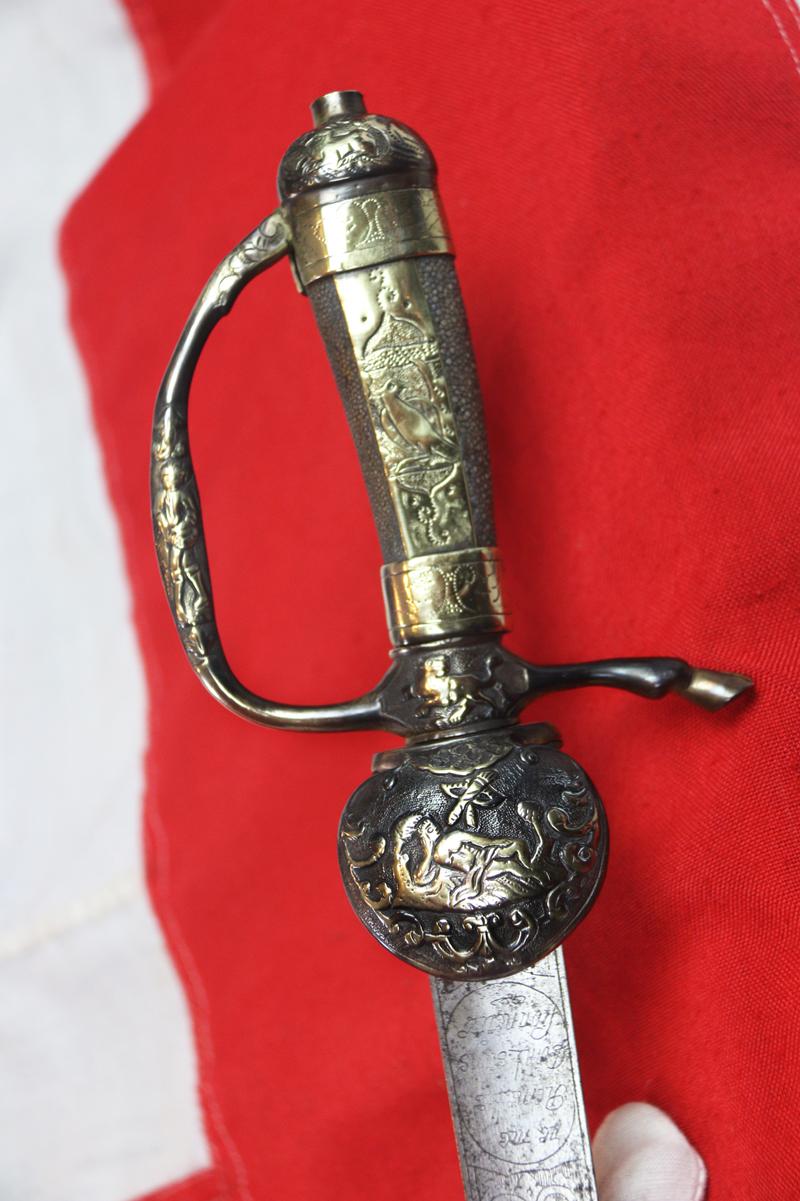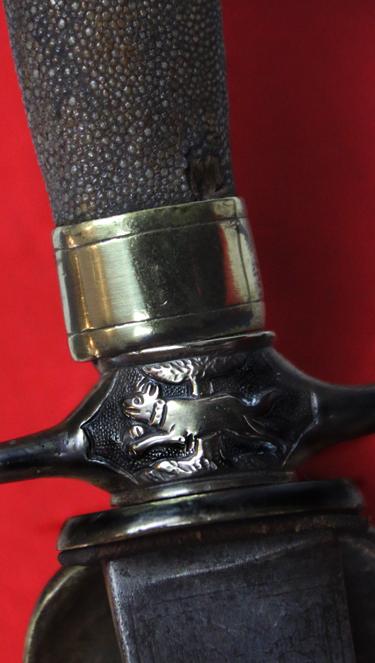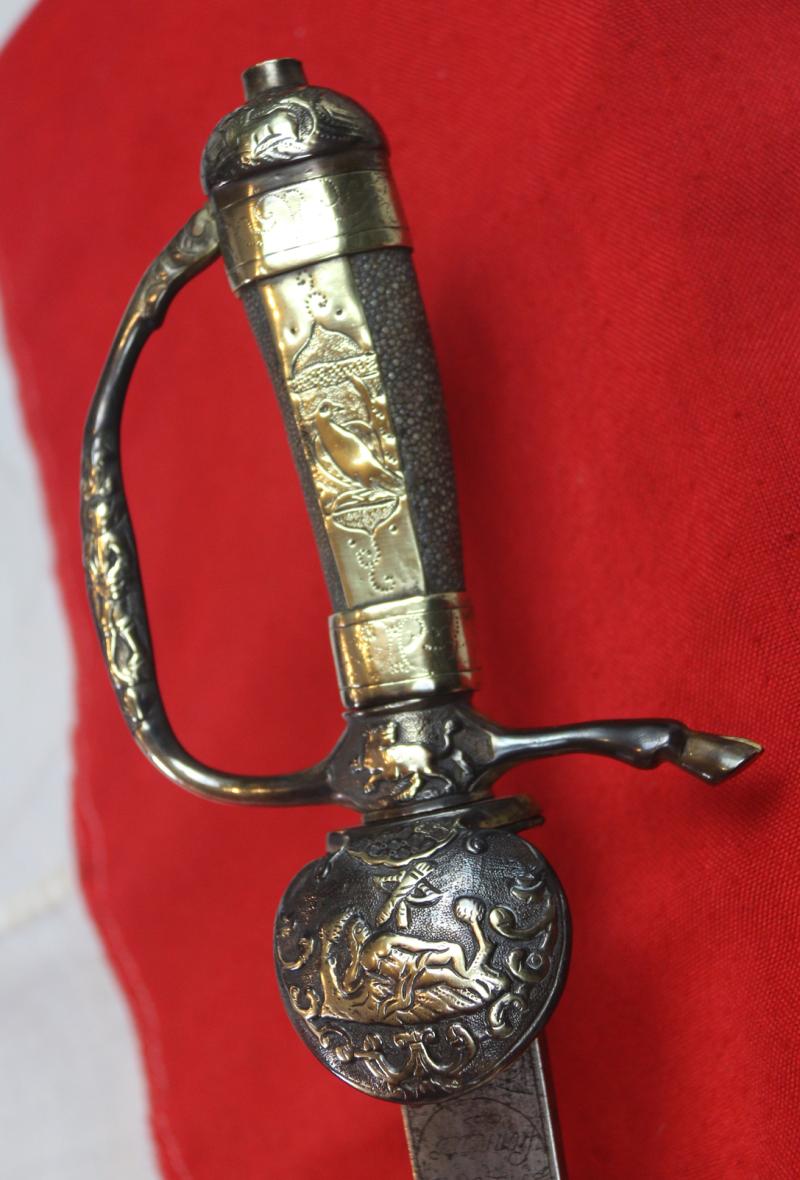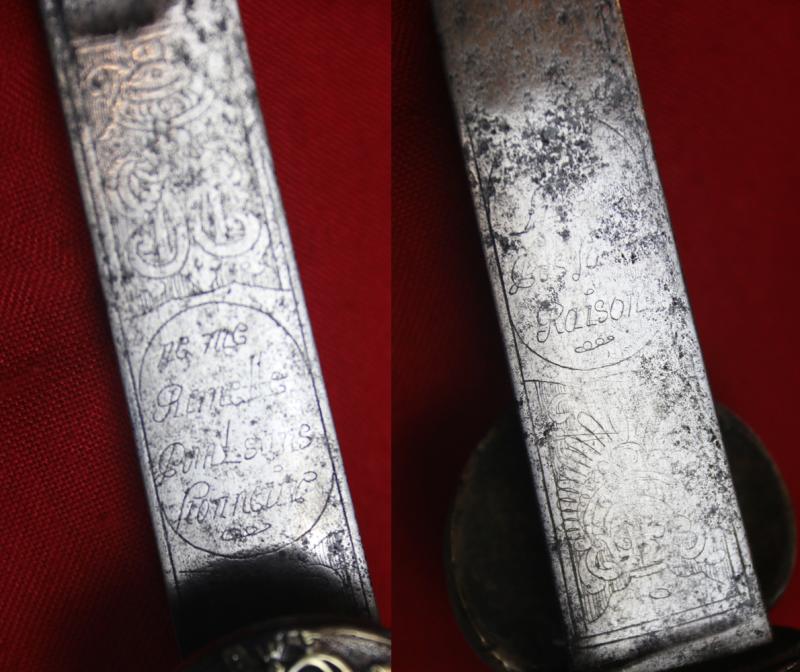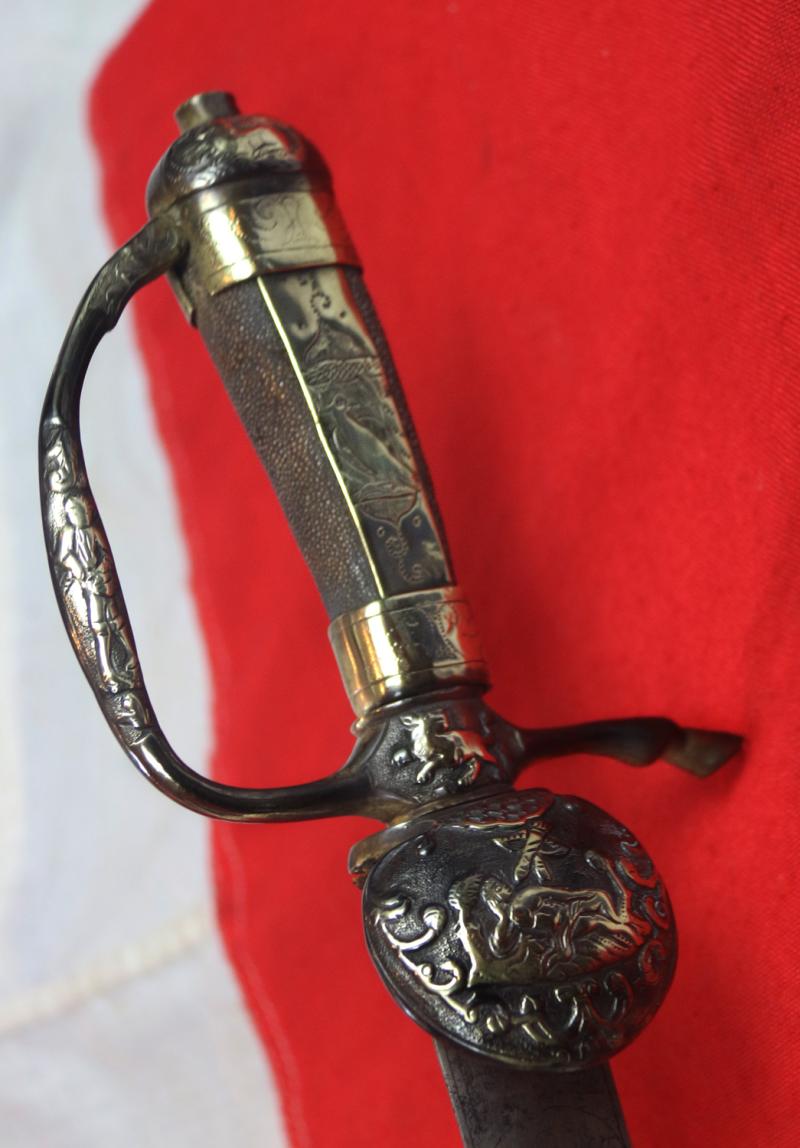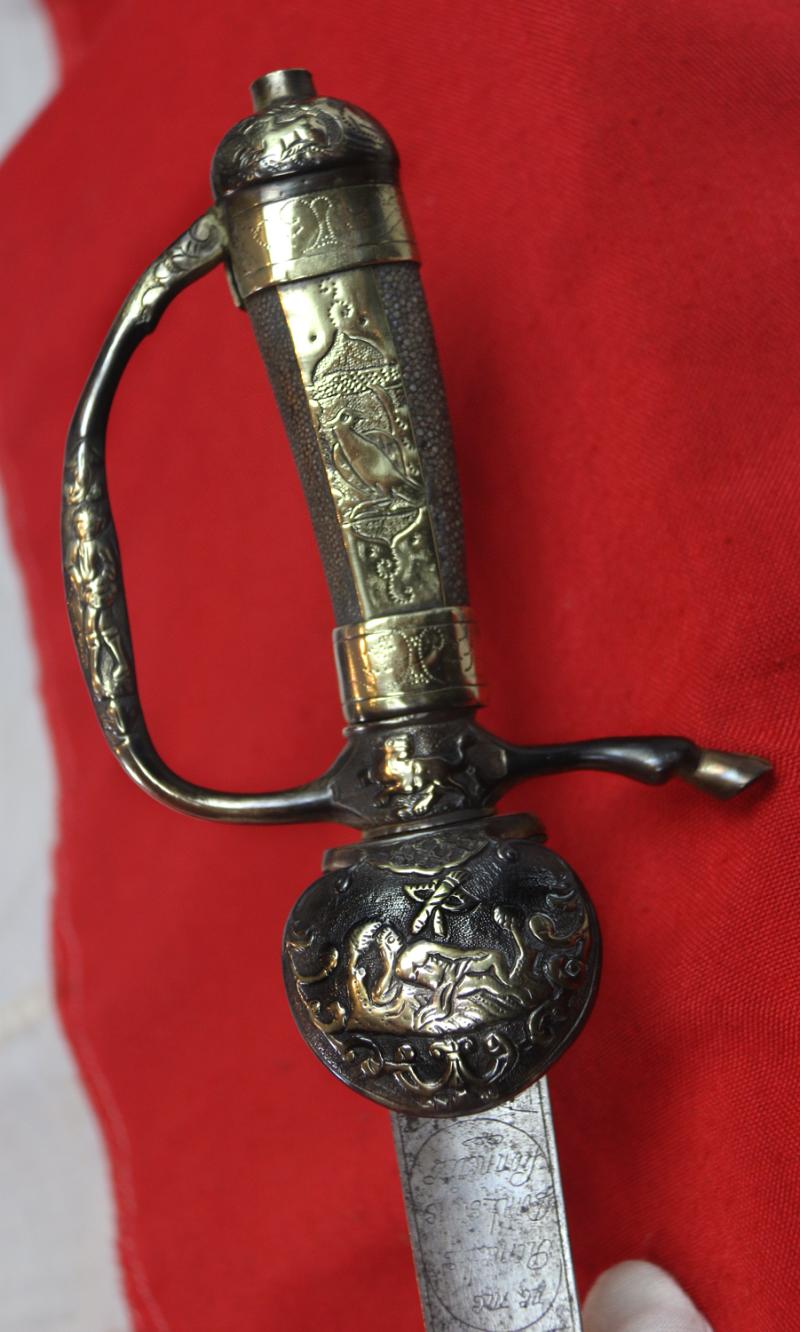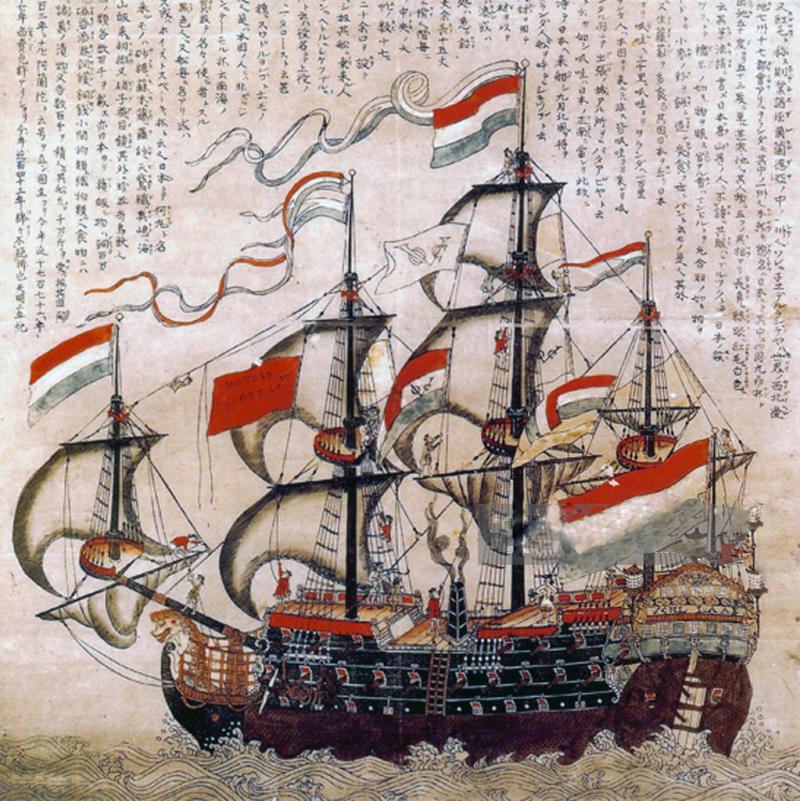A Very Rare Circa 1700’s Japanese Nagasaki Sword Maker ‘Sawasa’ Hunting Hanger With Japanese Hilt in The European Style, For a Senior Officer of the Dutch East India Company (VOC)
Made by Japanese emigre samurai sword koshirae {sword mounts} makers and artisans.
European hanger swords were the weapon of choice for maritime officers employed by the Dutch East India Company. The hilt and fittings of this sword were probably added to the European blade by Japanese émigrés in the Dutch colony of Batavia (Jakarta). They were made using the sawasa technique of gilded copper alloy with black shakudo detailing. Japanese samegawa grip {giant rayskin}, with a vertical panel, engraved with an exotic bird in front of two Indonesian mosque temple domes.
The level of workmanship suggests that the sword belonged to a high-ranking company official.
A sawasa hilted hunting hanger. It features a straight blade with a double-edged tip and wide fuller, flanked by a narrow groove near the spine. In the base of the fuller on either side are a running stag and a boar, both prized hunting animals, and French motto of honour. Sometimes referred to as 'Tonkinese chiseled work', these 18th century export wares became highly sought after.
An Early 18th century Sawasa hilted sword
Including single shell-guard, chased and gilded in high relief against a blackened fish-roe shakudo ground, chisseled with reclining Eros with his bow and quiver. the hilt quilon block is chisseled on one sade buy a collared hunting hound and tiger to the other side. The knuckle bow is chisseled with the figure of a turbanned Jakartan figure. the pommel is chisseled with a stag, and the quillon end is a stag hoof. Overall the hilt is decorated with a combination of artistic styles of the Dutch East Indies, and Europe, made by Japanese emigre artistry with japanese samegawa binding, finished in a mixture of shakudo and gilt.
This sword is a beauty in a superb state of preservation.
Sawasa is the Japanese name given to objects made by Asian artisans, adopting European models combined with Japanese and Chinese materials and decorative motifs. This decoration consists of refined gilt relief and engraving on a lustrous lacquered surface. Sawasa wares are the result of cultural interaction between Asia and Europe. As a consequence of global trade in the 17th century, mutual interest arose in the peculiarities of each other’s culture. The Dutch and other Europeans brought rare objects back from their travels which whetted the appetite for exotic rarities. The earliest sawasa objects are sword and hanger hilts and tobacco boxes ordered in Japan from Batavia, now Jakarta. Sawasa demonstrates not only the intercontinental commercial connections created by the Dutch East India Company (VOC) but also mutual cultural influences between Europe and Asia.
The decoration of the fittings suggests that the sword was mounted for the export market. In the seventeenth and eighteenth centuries, a style of metalwork known as sawasa was produced for the Dutch East India Company in and around Nagasaki and, following Japan’s closed country (sakoku) edicts, from around 1639 by exiled Japanese sword fitting craftsmen working in Batavia, where the market for sawasa was a profitable one. The idea of sawasa was that objects made from a copper alloy were given gilt relief decoration with black lacquered highlights to achieve the appearance of shakudō. The extensive metalwork here resembles shakudō, but is likely to be sawasa with highlights in gold. The ground is covered with fine punch marks in a pattern resembling fish roe (nanako), although the punch marks are not completely uniform. The wooden hilt is covered on each side with panels of brass alloy, over ray skin and once overlaid with gold leaf;
Blade engraved, on both sides, Ne me Tirez pas sans Raisons.. Ne me Remette point sans Honneur
Do not shoot me without reason do not hand me over without honour.
The hilt and blade is exceptionally sound and great condition, but with all the due appropriate age and surface wear from the past three hundred years
Picture in the gallery, a Japanese woodblock print, of a 17th century Dutch East India Co. vessel trading in Japan.
For reference;
Sawasa – Japanese Export Art in Black and Gold 1650-1800 Rijksmuseum Amsterdam
Code: 25034

